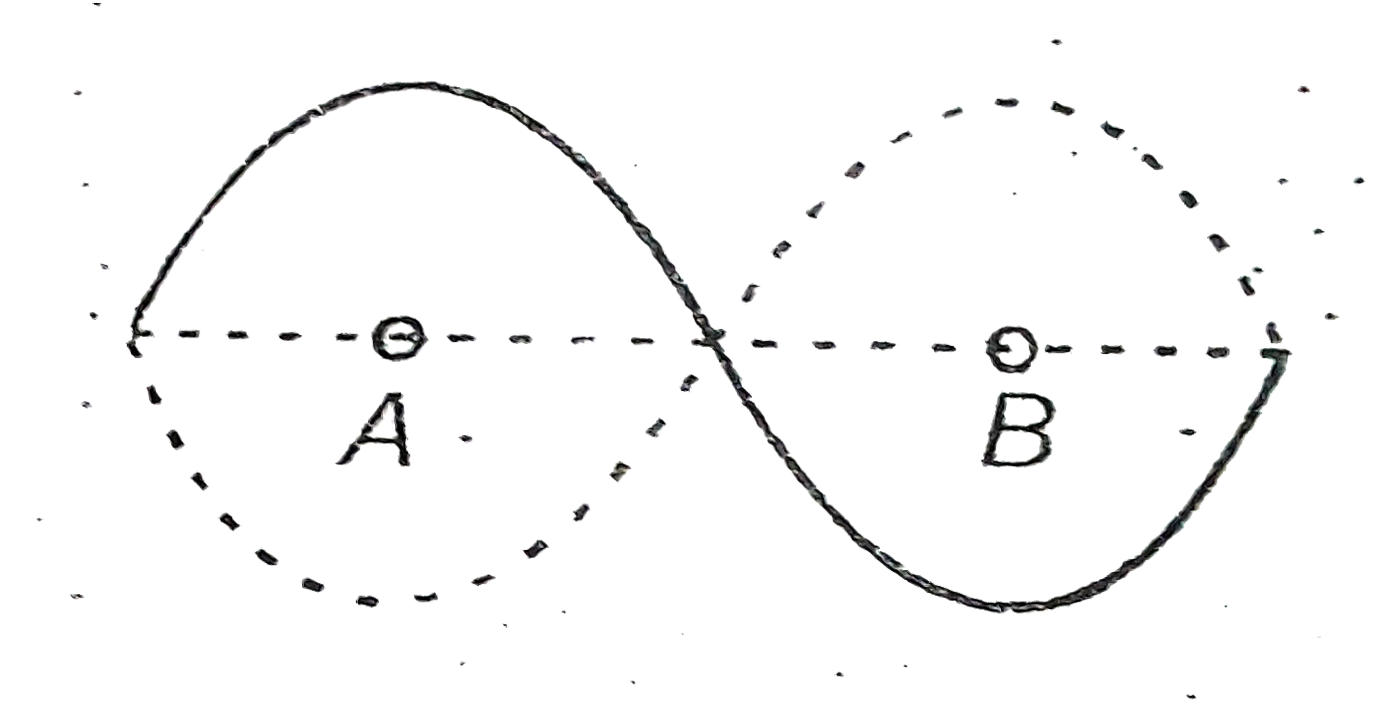Define phase and phase difference.
Step-by-Step Solution
Step 1: Define Phase
- The phase of a wave is defined as the angular displacement of a particle in the wave. It indicates the position of the wave at a given time and location. Mathematically, the phase can be represented in the wave equation as:
y=Asin(ωt−kx+ϕ)
In this equation, the term (ωt−kx+ϕ) represents the phase of the wave.
Step 2: Explain the Components of the Phase
- Here, A is the amplitude of the wave, ω is the angular frequency, t is time, k is the wave number, x is the position, and ϕ is the phase constant. The phase determines the displacement of the wave at any position x and at any instant t.
Step 3: Define Phase Difference
- Phase difference refers to the difference in phase between two points or two waves. It is a measure of how much one wave lags or leads another wave. For two waves described by the equations:
y1=Asin(ωt−kx+ϕ1)
y2=Asin(ωt−kx+ϕ2)
The phase difference Δϕ is given by:
Δϕ=ϕ2−ϕ1
Step 4: Importance of Phase and Phase Difference
- The phase and phase difference are crucial in understanding wave interference, where waves can constructively or destructively interfere based on their phase relationship.
- The phase of a wave is defined as the angular displacement of a particle in the wave. It indicates the position of the wave at a given time and location. Mathematically, the phase can be represented in the wave equation as:
y=Asin(ωt−kx+ϕ)
- Here, A is the amplitude of the wave, ω is the angular frequency, t is time, k is the wave number, x is the position, and ϕ is the phase constant. The phase determines the displacement of the wave at any position x and at any instant t.
- Phase difference refers to the difference in phase between two points or two waves. It is a measure of how much one wave lags or leads another wave. For two waves described by the equations:
y2=Asin(ωt−kx+ϕ2)
- The phase and phase difference are crucial in understanding wave interference, where waves can constructively or destructively interfere based on their phase relationship.
Topper's Solved these Questions
- OSCILLATIONS Book:ICSEChapter:OSCILLATIONS Exercise:VERY SHORT ANSWER QUESTIONS
Explore 13 Videos
- OSCILLATIONS Book:ICSEChapter:OSCILLATIONS Exercise:SELECTED PROBLEMS (FROM THE CHARACTERISTIC OF SHM)
Explore 14 Videos
- OSCILLATIONS Book:ICSEChapter:OSCILLATIONS Exercise:LONG ANSWER QUESTIONS
Explore 3 Videos
- MOTION IN FLUIDS Book:ICSEChapter:MOTION IN FLUIDS Exercise:SELECTED PROBLEMS (FROM POISEUILLE.S FORMULA)
Explore 19 Videos
- PROPERTIES OF MATTERBook:ICSEChapter:PROPERTIES OF MATTERExercise:MODULE 4 ( TEMPERATURE ) UNSOLVED PROBLEMS
Explore 12 Videos
Similar Questions
(A) In a progressive wave, the phase diffe rence between two particles of a medium having a path difference λ is 2π
(R): The phase difference is directly propor tional to path difference between particles in progressive wave
View SolutionTwo bodies performing S.H.M. have same amplitude and frequency. Their phases at a certain instant are as shown in the figure. The phase difference between them is
_E01_002_Q01.png)
View SolutionIn a common base ampifier , the phase difference between the input signal and output voltage is
View SolutionFor constructive interference, the phase difference between the two interfering waves is
View SolutionIn a standing wave particles at the positions A and B, have a phase difference of

View SolutionIn a wave, the path difference corresponding to a phase difference of ϕ is
View SolutionThe path difference equivalent to a phase difference of 180∘ (given wavelength of wave = λ) is
View SolutionTwo sound waves having a phase difference of 60∘ have path difference of
View SolutionWhen two waves with same frequency and constant phase difference interfere,
View SolutionIn a standing wave the phase difference between two points on either side of a a node will be
View Solution